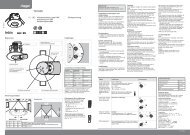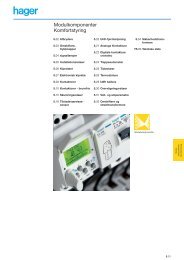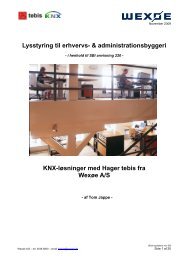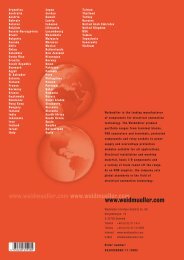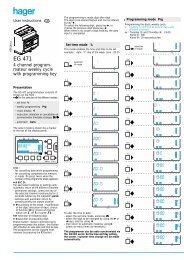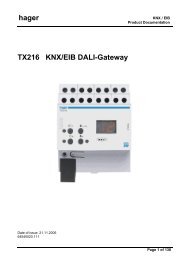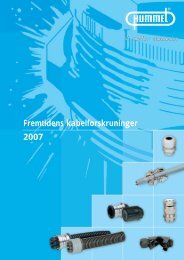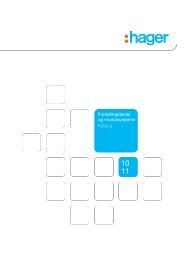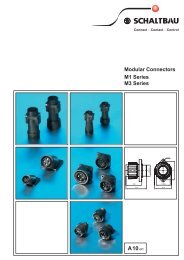SMT/THR PCB-COMPONENTS
SMT/THR PCB-COMPONENTS
SMT/THR PCB-COMPONENTS
Create successful ePaper yourself
Turn your PDF publications into a flip-book with our unique Google optimized e-Paper software.
3.2.1 Defining the diameters of<br />
placement holes and soldering<br />
eyelets<br />
To calculate the necessary paste volume,<br />
first define the volume of the soldered<br />
joint in accordance with the required<br />
quality. For an adequate soldered joint,<br />
the internationally recognised quality<br />
standard IPC A610B calls for a 75%<br />
filling height in the <strong>PCB</strong> (see also<br />
Section 3.5 "Quality control").<br />
The designer first defines the relevant<br />
diameter of the placement hole and of<br />
the soldering eyelet. Both parameters<br />
determine the necessary soldering<br />
volume for a given <strong>THR</strong> component.<br />
Placement hole diameter:<br />
For <strong>THR</strong> soldered joints (contrary to<br />
wave soldering), a slightly larger<br />
placement hole diameter is advisable<br />
because melting-on of the paste in the<br />
hole needs sufficient space.<br />
Solder<br />
pastes also consists of a mixture of<br />
soldering globules and admixtures (flux),<br />
and are categorised according to grain<br />
sizes. To avoid jamming or friction of<br />
the pin in the hole with these soldering<br />
globules during the placement process,<br />
the chosen grain size should be as small<br />
as possible.<br />
The tolerances of the <strong>PCB</strong>s, the<br />
placement machine and the component<br />
must be taken into account as further<br />
factors in determining the placement<br />
hole diameter for the automatic<br />
placement process. For example, in<br />
the case of connectors the position of<br />
the pin end in the pitch is subject to<br />
special tolerances, with the result that<br />
it is the respective manufacturer's task<br />
to optimise the pin end position's circle<br />
of throwout.<br />
Weidmüller recommends the following<br />
as suitable placement hole diameters<br />
for <strong>THR</strong> soldering processes:<br />
For round pins:<br />
pin diameter + at least 0.3 mm<br />
For rectangular pins:<br />
pin diameter + at least 0.25 mm<br />
Soldering eyelet diameter:<br />
Soldering eyelet diameter<br />
The volume of the soldering meniscuses<br />
should also be optimised so as to<br />
minimise the solder volume. This is<br />
achieved by minimising the soldering<br />
eyelet diameter in comparison with<br />
diameters as are usual in classical<br />
Through-Hole-Technology.<br />
Recommended soldering eyelet diameter<br />
for through-hole soldered joints:<br />
placement hole diameter<br />
+<br />
2 x residual ring width<br />
=<br />
soldering eyelet diameter<br />
The residual ring width usually amounts<br />
to 0.3 mm. For <strong>THR</strong> components such<br />
as connectors a slight increase in the<br />
residual ring width to about 0.4 mm is<br />
advisable for reasons of higher soldered<br />
joint stability and reparability.<br />
Residual ring<br />
width<br />
Placement hole diameter<br />
Placement hole layout for <strong>THR</strong> pins<br />
APPLICATION INFORMATION 7



